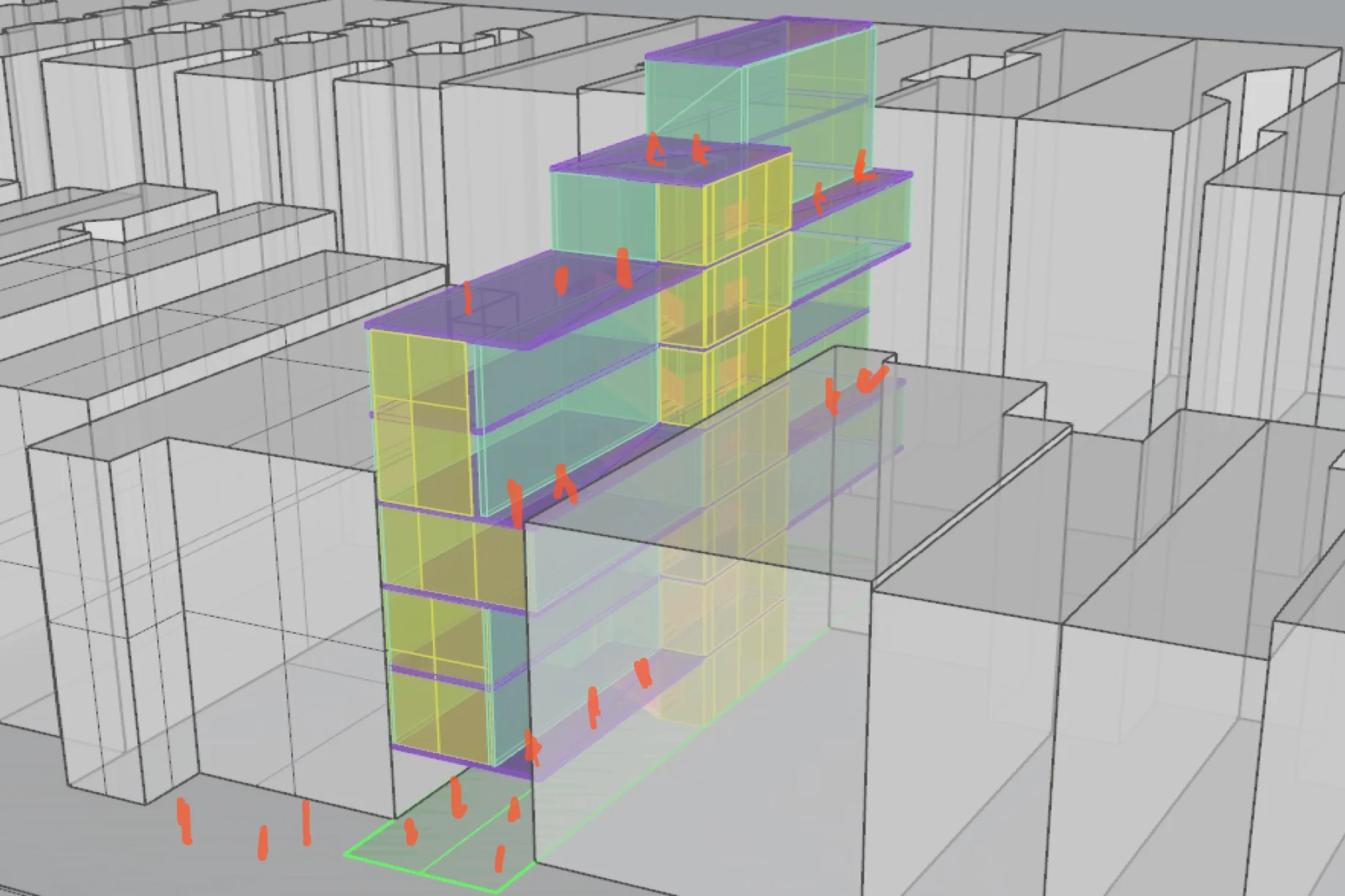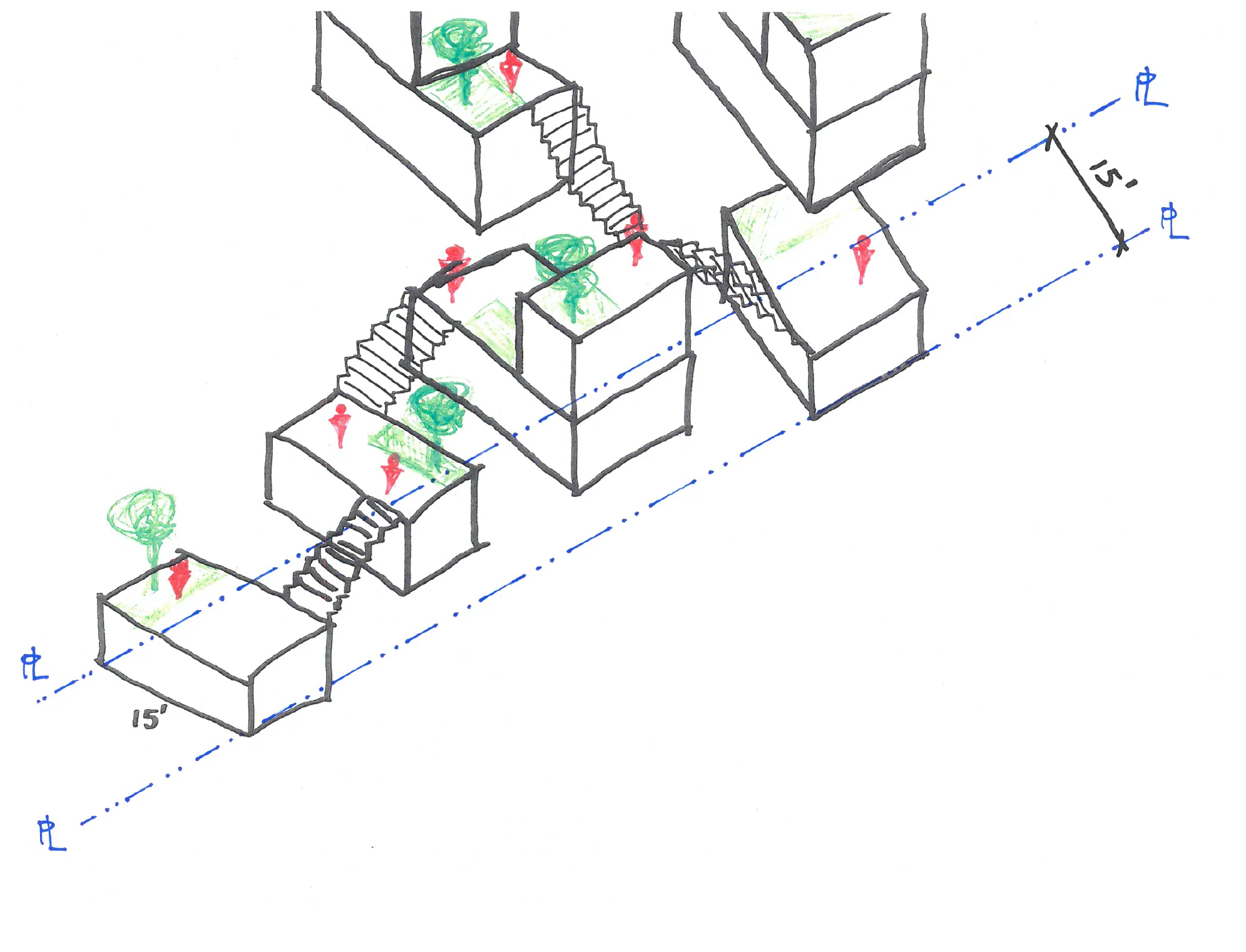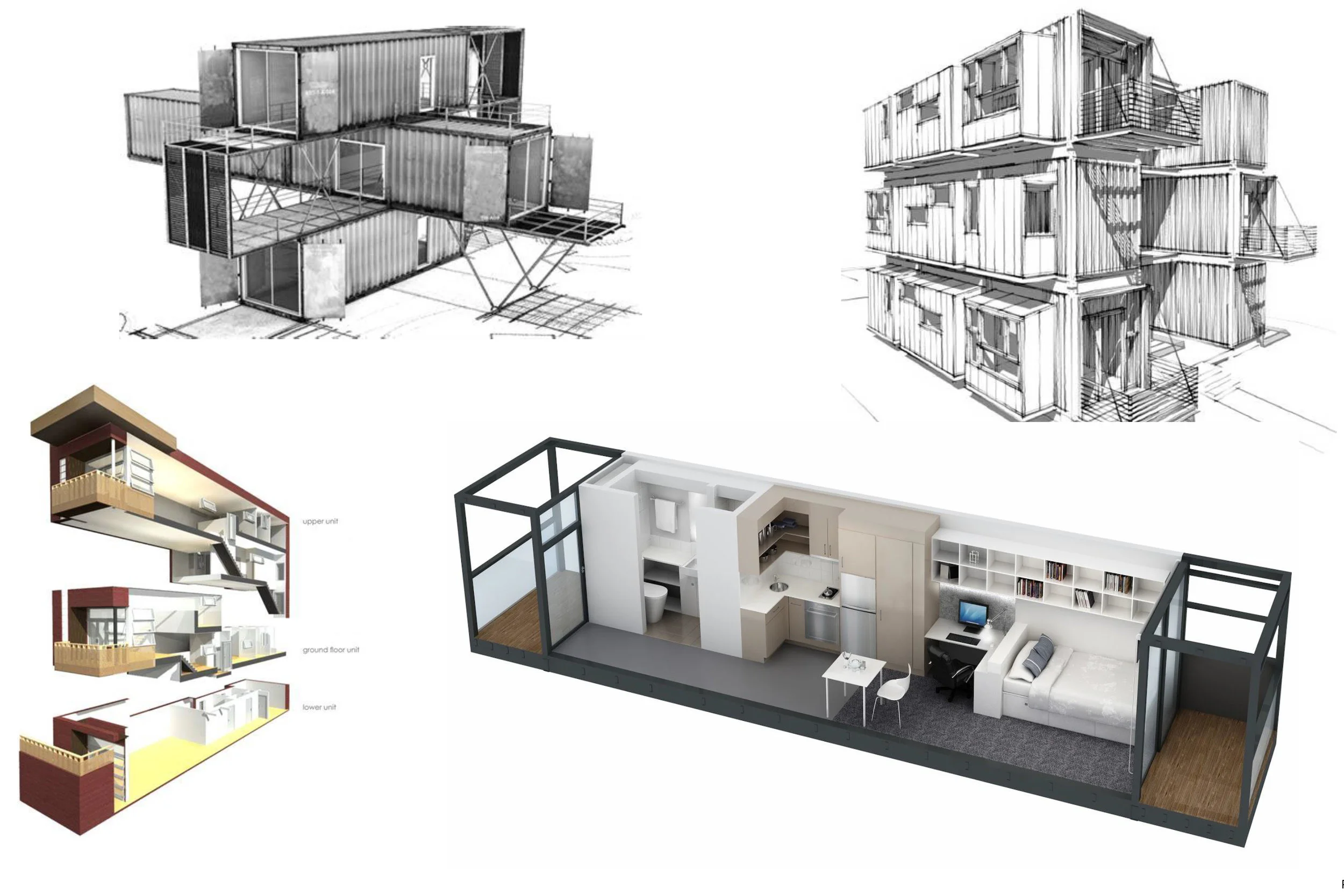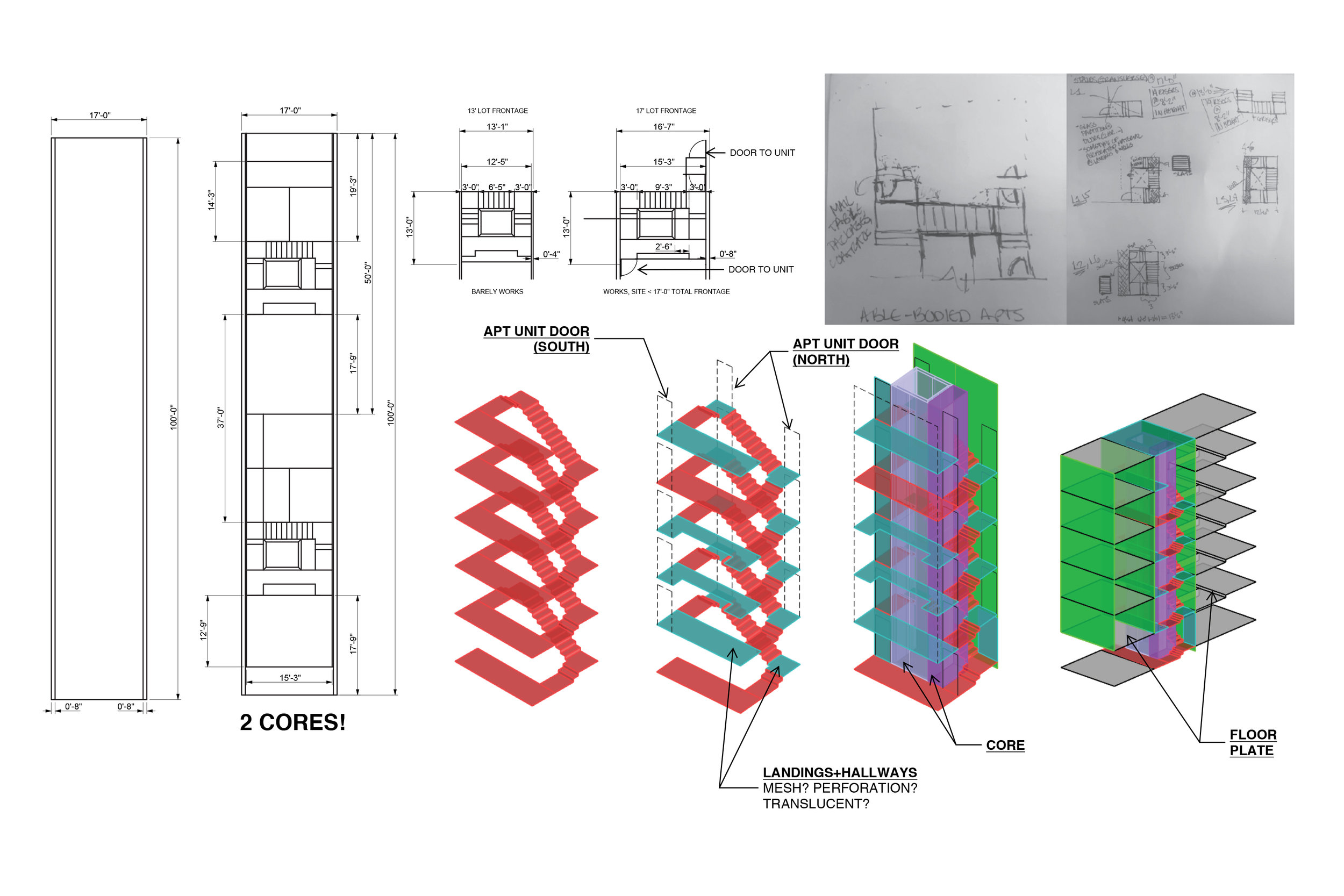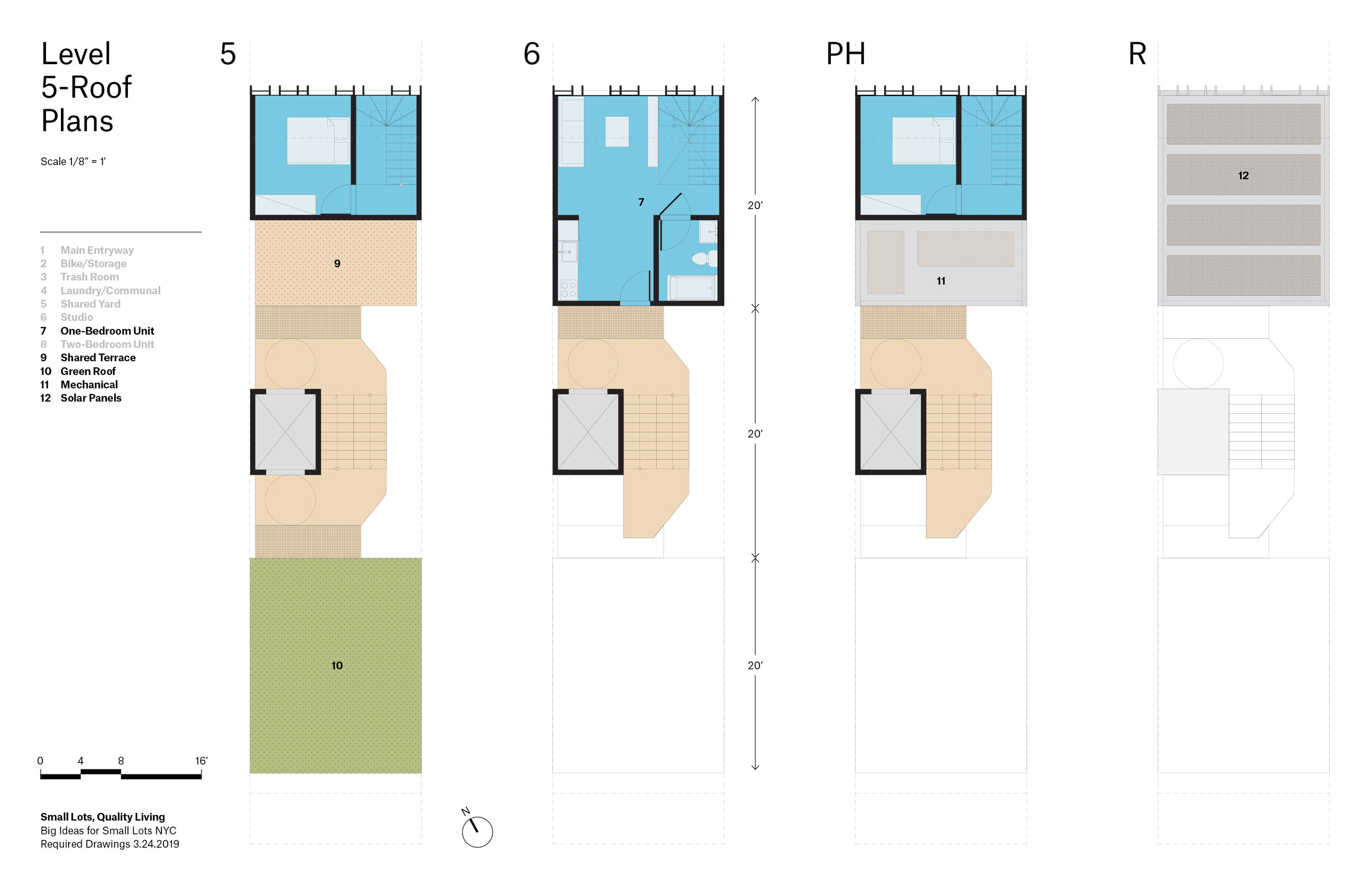Big Ideas Small Lots: Housing Competition 2019
BIG IDEAS SMALL LOTS:
CREATING AN AFFORDABLE, SUSTAINABLE,
REPLICABLE HOUSING MODULE FOR NYC
D. HOUANG & THE DESIGN DIALOGUES COMMITTEE • SUMMER 2019
Davis Brody Bond recently submitted a scheme for Big Ideas for Small Lots NYC, a design competition sponsored by AIA NY and NYC HPD seeking proposals that demonstrate excellence in small-scale, urban infill affordable housing. In November 2017, Mayor Bill de Blasio announced the Housing New York 2.0 plan (HNY 2.0), which set a target of building or preserving 300,000 affordable homes by 2026. The plan proposed a variety of tools — financing, regulatory, and design — to increase the production of affordable housing. In support of HNY 2.0, HPD aggressively moved through its inventory of vacant and underutilized City-owned land to create more affordable housing; many of the remaining lots were challenging to develop due to their small size. Big Ideas for Small Lots NYC is a design competition to find housing solutions for such lots, and to explore their potential to contribute to citywide affordable housing options.
The design process started with a couple of informal happy hour pin-ups in which participants showed inspirations and precedents ranging from shipping containers to Le Corbusier to Dr. Who; discussed Davis Brody Bond’s history of navigating the challenges of affordable urban housing on influential NYC projects like Waterside (1974) and Riverbend (1967); and grappled with the challenges of providing ample light, space, dignity, comfort, and rational circulation on tight budgets within extremely tight space constraints.
The final design submission addressed a number of difficult questions: (1) How can a variety of sites that are situated across the five borough be conceptually unified, provided the unique constraints of each site and local contexts? (2) How can small lots embrace the values that are normally associated with large housing complexes? (3) Are there guiding principles that can establish a framework for efficiently generating affordable and higher quality housing? (4) Is the often-sacrificed access to light and air necessary to achieve density?
Our team believes that it is essential to establish clearly delineated core principles that directly inform solutions to the questions above, yet they must be able to adapt to the dynamics of New York City. These principles include creating more accessible, democratic, and socially-responsible affordable housing that focuses on the health and well-being of its inhabitants; respect for local communities and context, ethically & physically; respect for the environment; and developing a prototype that efficiency adapts to a variety of sites and contexts. The firm’s final narrative boards and drawings are posted below.



